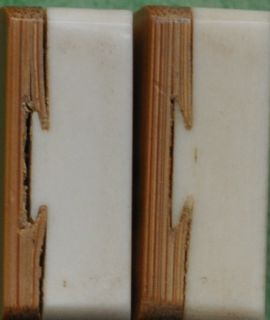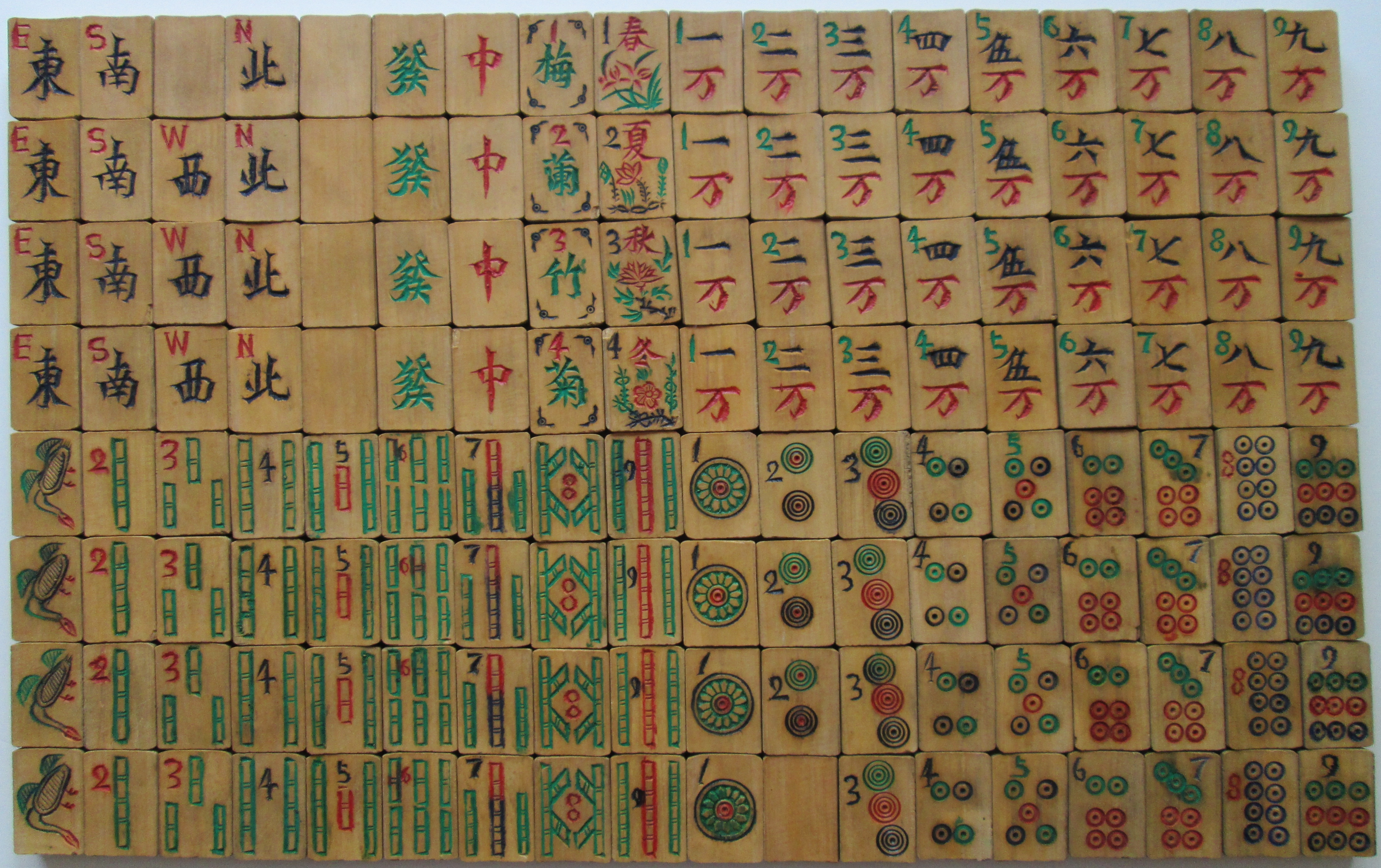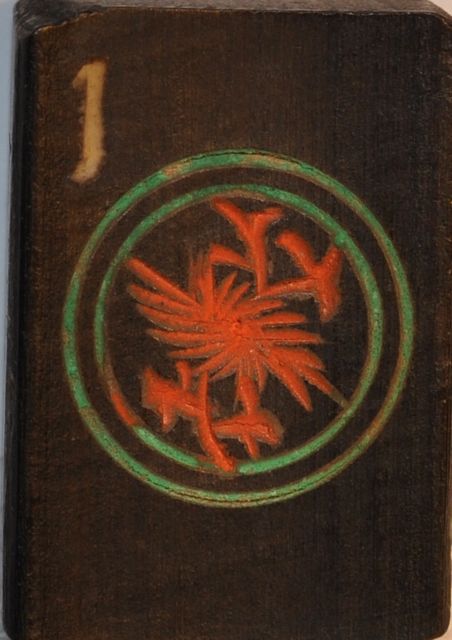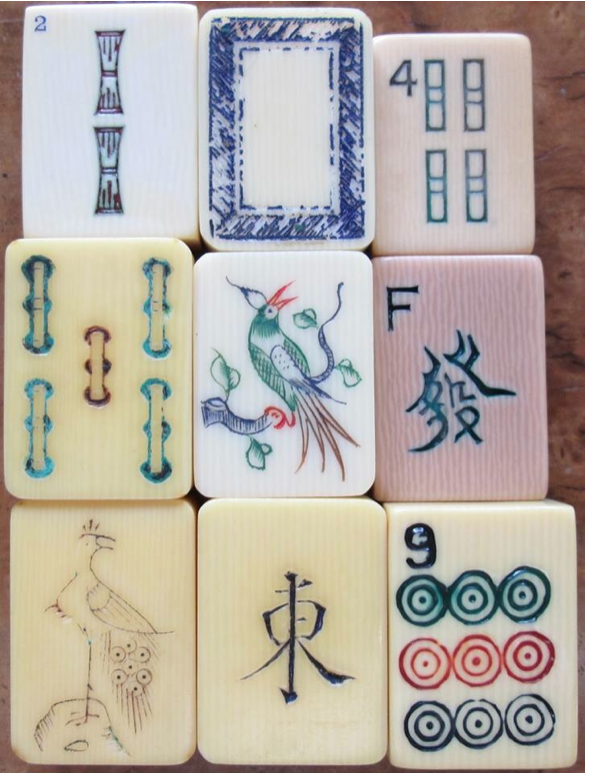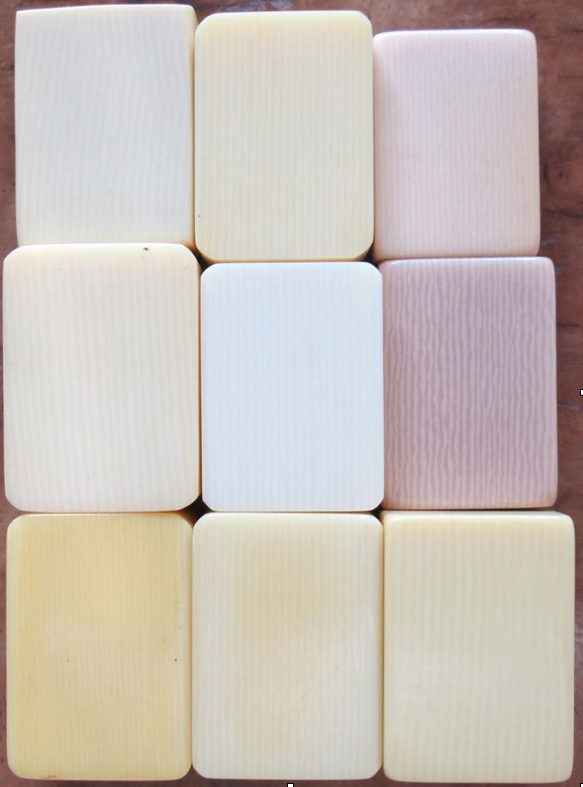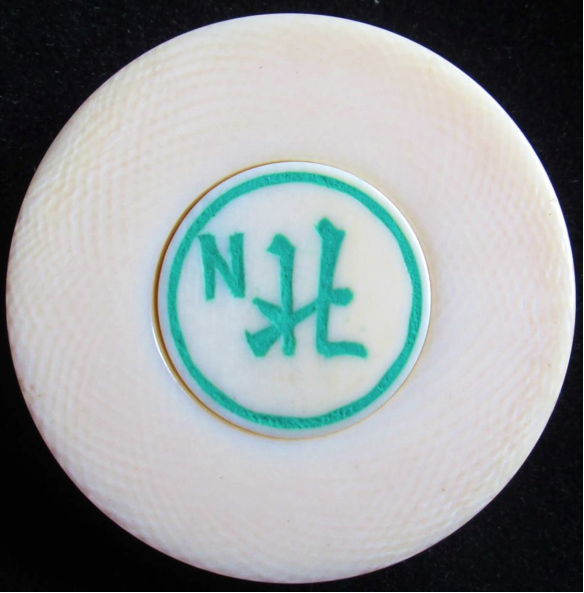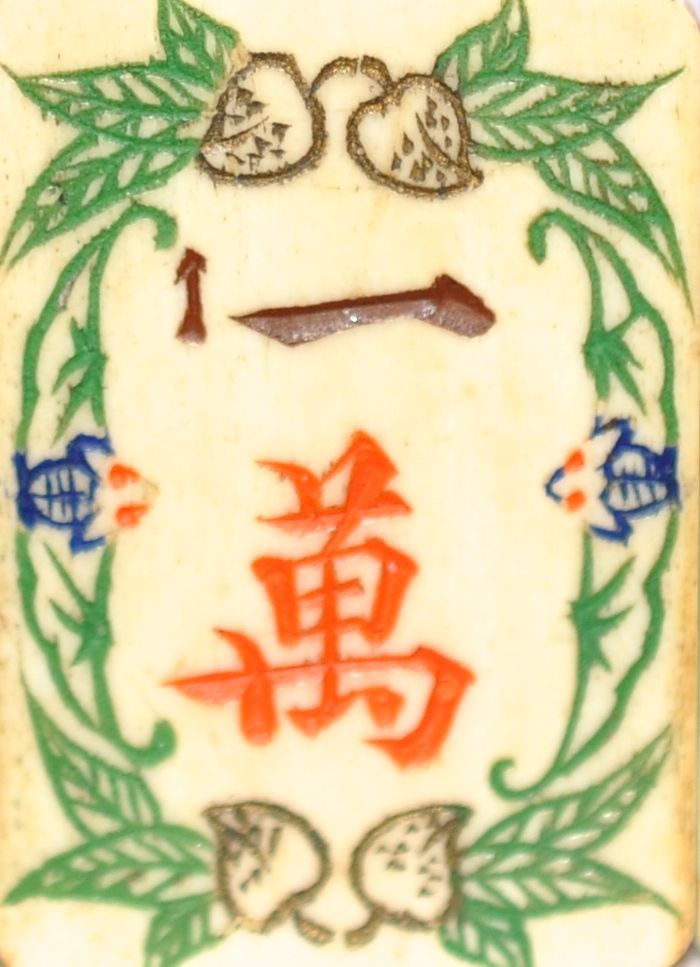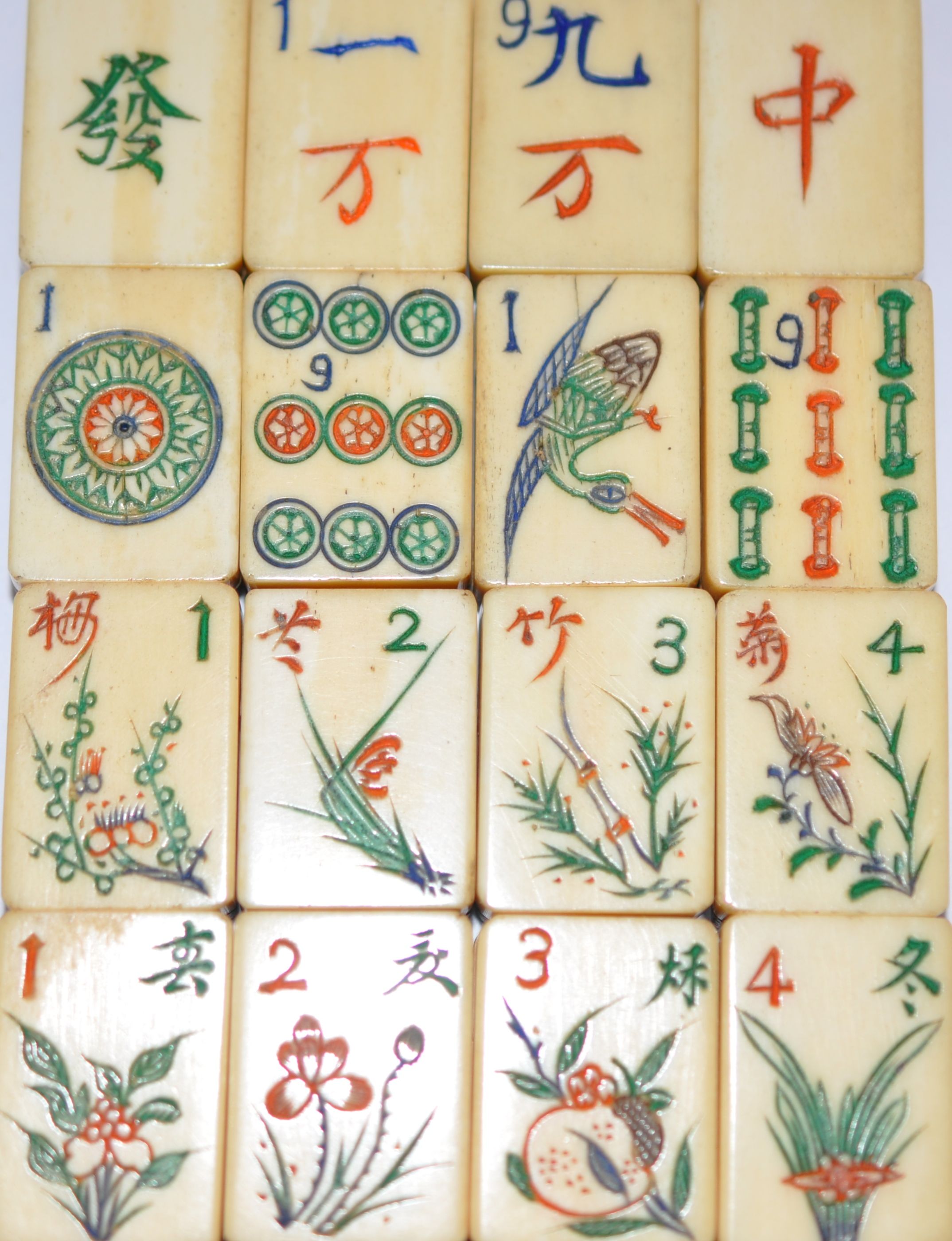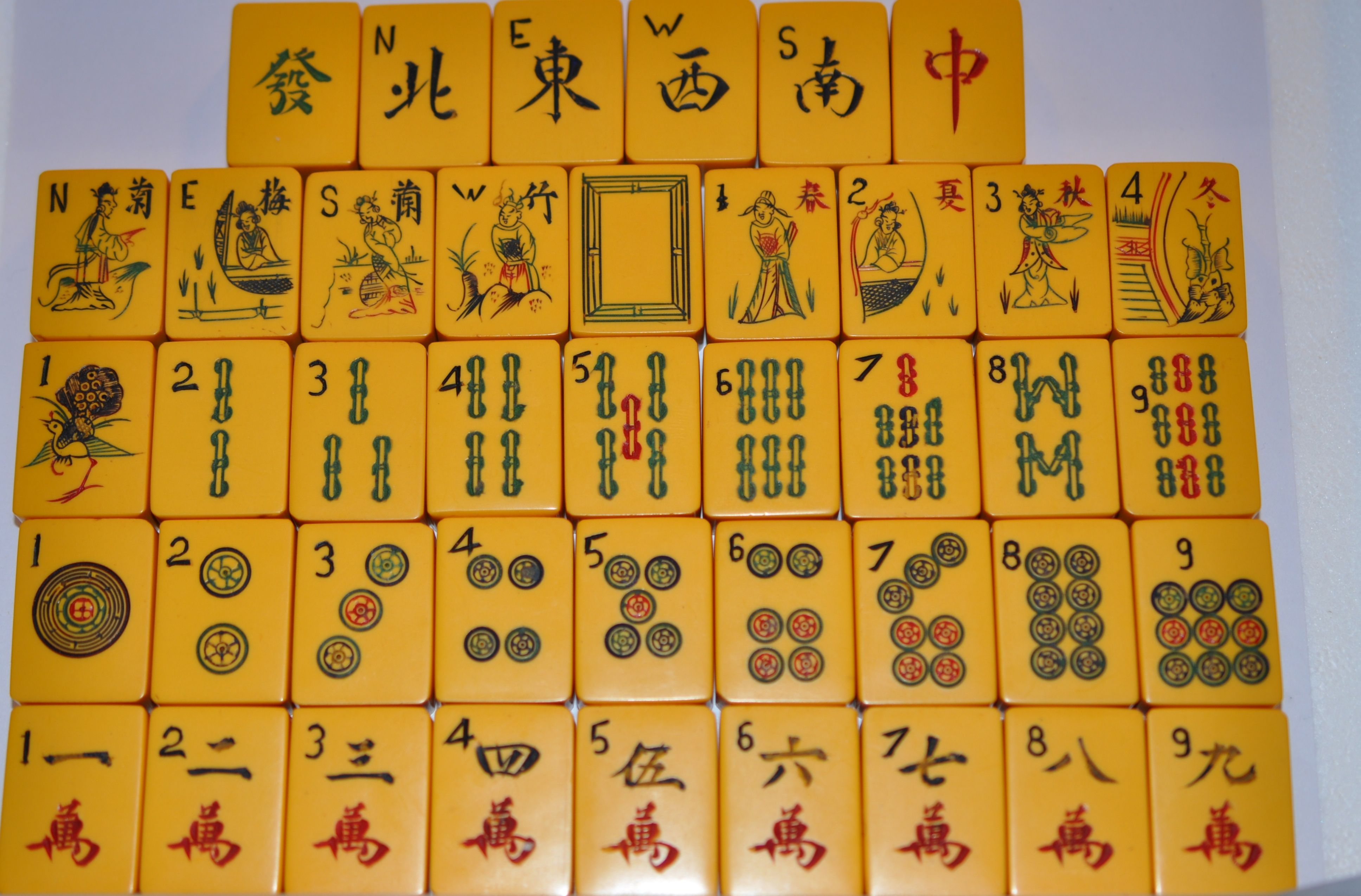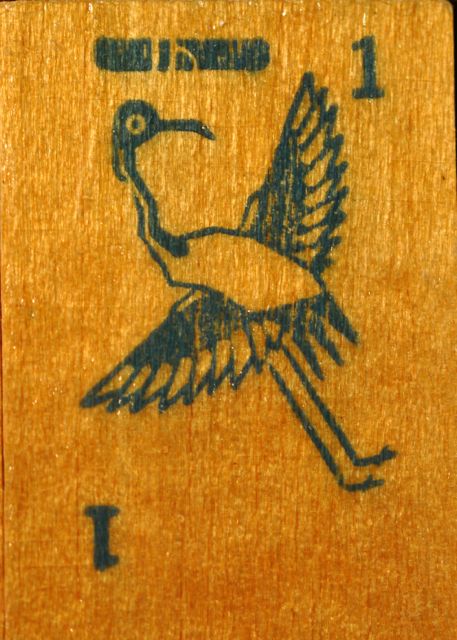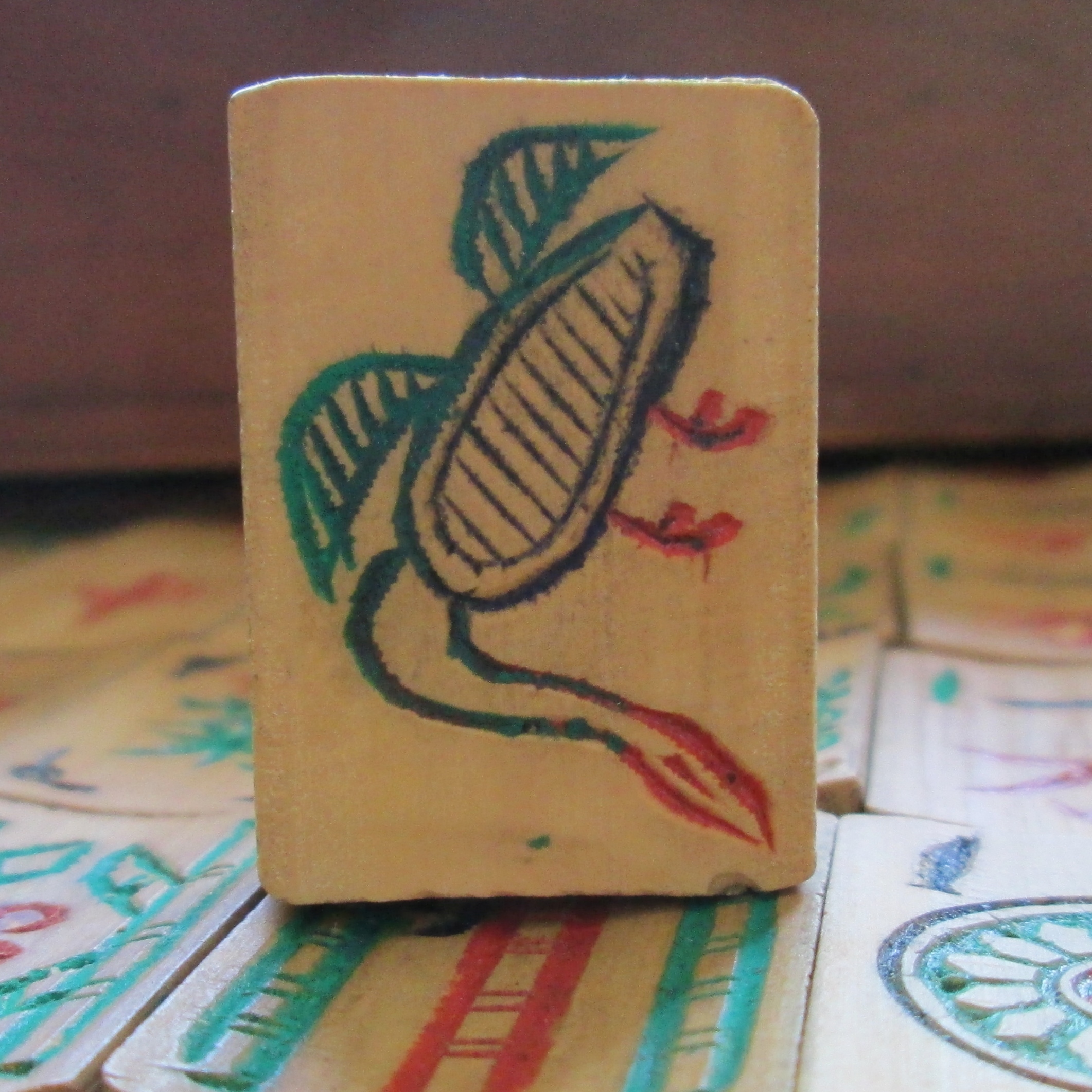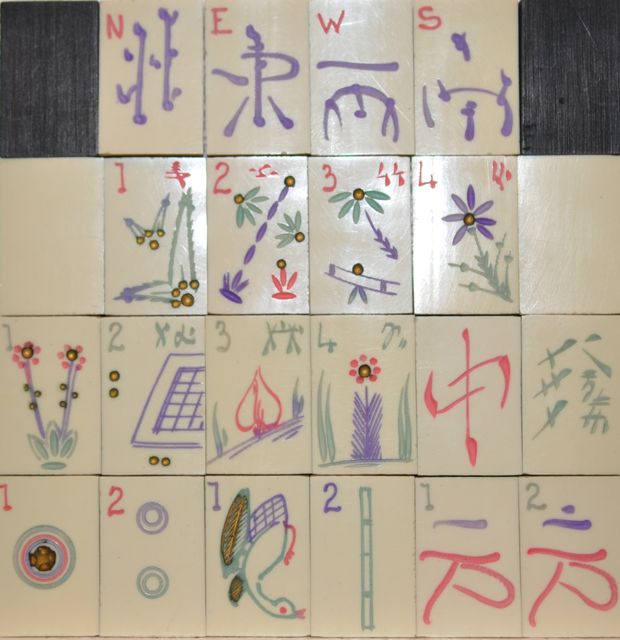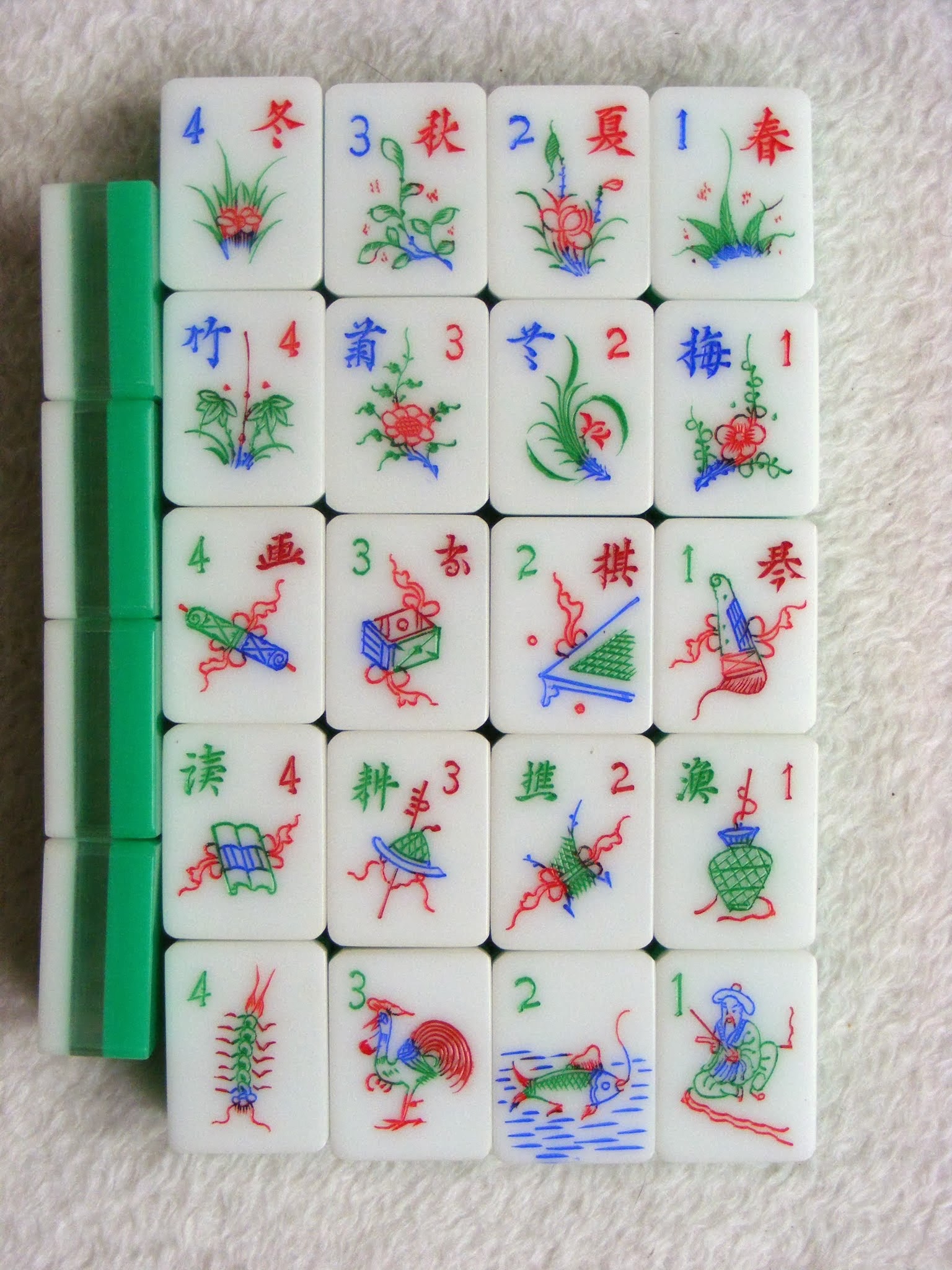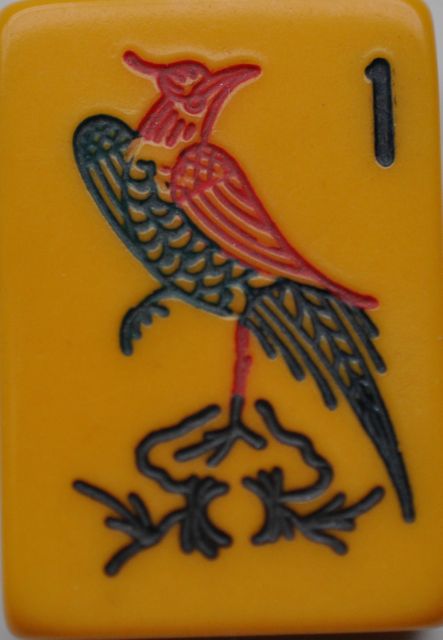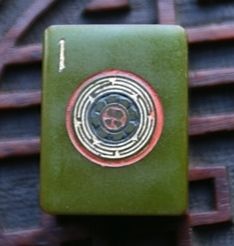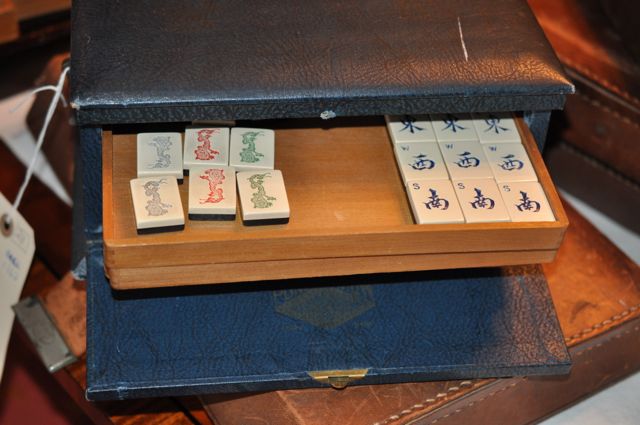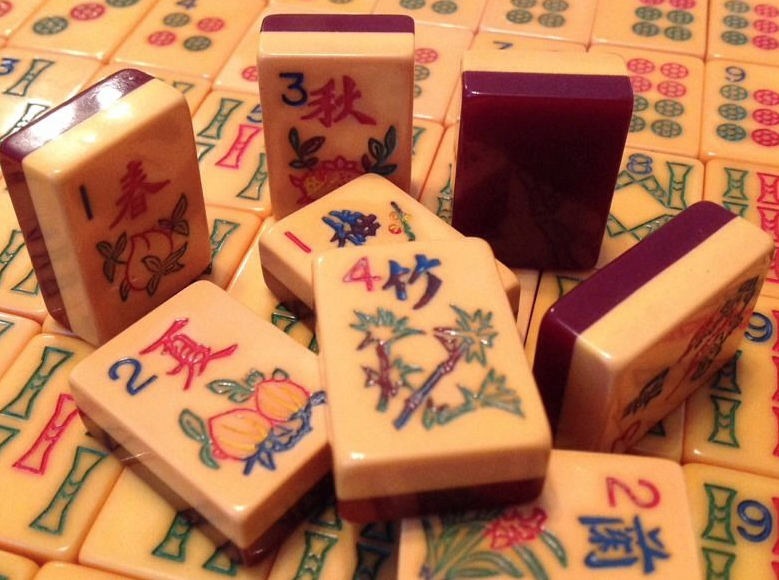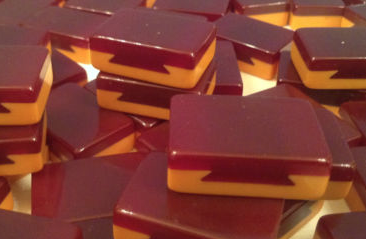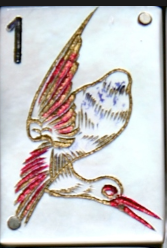Mah Jong sets have been made in many different materials, ranging from paper to bamboo, bamboo or ebony dovetailed onto bone or ivory, and synthetics such as Bakelite, Catalin and Chinese Bakelite (an affectionate term give to the orange block-like tiles). Many of these substances allowed for hand-carving, and these sets I really love; I enjoy seeing the slight carving differences that make each tile unique. But sometimes the design on the mass-produced ones have won me over too. Particularly attractive are some of the two tone tiles; I have a few made mostly in the 1930s and 1940s by Piroxloid, Ivorycraft, TYL and Mah-Jongg Sales of America.
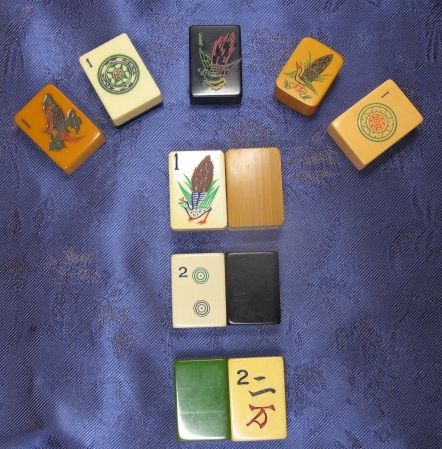
Bone and bamboo. These are very thick bone, and would have only been carved by master craftsmen.
Natural bamboo, dried, carved and painted.
Bamboo dyed black, then carved and painted.
French Ivory, a plastic made to resemble ivory.
French Ivory from the back,

and from the side.
Compare with real ivory, with the cross-hatching instead of the straight lines seen in French Ivory.
Here on this bone and bamboo tile, you will see there is no cross-hatching. You can see some evidence of Haversian lines on both edges of the tiles. These lines only appear on bone tiles.
and some of the subtle discolorations you can see on bone and bamboo tiles. Some tiny Haversian lines are seen here too.
Hand carved Chinese bakelite, a somewhat chunky substance that comes in slightly different shades of orange.
Chinese Bakelite can have another color as a wafer back, seen here in black.
A wood tile, which looks somewhat delicate. The wood tile has only been painted, not carved.
These tiles have been lightly carved and then painted.
Compare these with bamboo which is hard to carve:
A thin plastic laminate top, glued to wood. Sometimes these tops are glued to plastic backs.
Tri-color, or more accurately tri-layer, hand-carved lucite. The backs come in many different colors.
Bakelite or Catalin, two different plastics made by different companies, although the tiles tend to be called Bakelite by most people. Catalin allowed for swirls, easily seen on some racks.
A different kind of plastic,
and another as well.
Pyralin, used by the Pung chow Company. It is believed Piroxloid may have used the same material, or one very similar, to make their back and white tiles. The company stated their tiles never faded or discolored.
Two tone "Bakelite" tiles
and dove-tailed "Bakelite" tiles.
And we will end with a mother-of-pearl tile.

